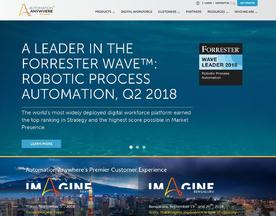If you’re a business producing a large amount of media content, you’ve probably heard of AI audio transcription services. AI promises a new era of quick and cost-effective audio-to-text transcriptions, making it a total game changer for the industry. The possibility to automate workflows in transcribing audio or video files is alluring, though some may question the quality of AI-generated transcripts.
In this article, we’re going to answer your questions about how good automated transcription services are, especially compared to manually transcribing audio recordings. We’ll highlight the pros and cons of AI transcription tools to reveal whether they’re the right choice for your business.
What is audio transcription?
Audio transcription helps you convert spoken words into written text. Transcription was born out of the necessity for more accessible content for the hard of hearing but gradually had many more practical uses. For example, transcription helps with note-keeping for recorded research interviews, which later can be useful in referencing and citation. Transcription also provides convenience, in the case of social media videos, for people who would rather read subtitles than hear the audio. In cases where translation is required, transcription is the first step in optimally converting audio or videos into other languages, as the speech needs to be recorded as text beforehand.
The new way to automatically transcribe audio
There are many uses for audio/video transcription, especially in industries that deal with media content. It is also natural that people and businesses are constantly on the lookout for better, faster, and cheaper ways to transcribe their content. Formerly, transcription happens solely via a trained human professional. The person would listen to the spoken languages and note them down, thus creating a transcript. However, this costs a bit of time and effort, which can become a problem when dealing with a large number of video or audio files. Therefore, the concept of AI-supported transcription software was created, as machine learning has proven to be effective as a transcription tool.
AI is a relatively new phenomenon for the masses. As with many new phenomena, there are some doubts. In the case of transcription, skeptics tend to fixate on the quality of AI output and whether they can trust machines to handle their transcription work fully. In the next part, we will explain how AI transcription works and put it to the test with traditional, human-made transcriptions.
How does AI transcribe audio?
AI transcription relies on automatic speech recognition (ASR) technology. ASR is a technology that has been developed for decades, starting from the 1950s. ASR is multi-layered and designed with different transcription models in mind. Here’s a short rundown of how ASR works.
How ASR Works
The journey of converting spoken words into text through ASR involves several sophisticated steps.
Audio input: The process begins with capturing spoken language using a microphone or another audio input device. This initial audio capture is crucial, as the quality of input affects the overall performance of the ASR system.
Preprocessing: The raw audio signal is then preprocessed to remove background noise and enhance clarity. This stage involves filtering and normalizing the signal to prepare it for further analysis.
Feature extraction: In this phase, the audio signal is analyzed to extract essential features. Techniques like Mel-Frequency Cepstral Coefficients (MFCCs) and spectrograms are commonly used to transform the audio into a format suitable for machine learning algorithms.
Acoustic modeling: Acoustic models play a vital role by mapping the audio features to phonetic units (phonemes), which are the smallest units of sound in speech. These models are trained on vast datasets comprising recorded speech and their corresponding transcriptions to ensure accuracy.
Language modeling: Language models help predict the likelihood of word sequences. By incorporating grammatical rules, contextual understanding, and statistical probabilities, these models enhance the accuracy of the recognized text.
Decoding: The decoding process combines the outputs from the acoustic and language models to generate the most probable text transcription. Advanced algorithms like Hidden Markov Models (HMM), Deep Neural Networks (DNN), Recurrent Neural Networks (RNN), and Transformer models are employed to achieve this.
Post-processing: Finally, the raw text output undergoes post-processing to correct errors, add punctuation, and format the text appropriately for readability.
AI plays a crucial role in processing, extracting, mapping sounds according to models and decoding them to the highest standard. Modern AI has also included the ability to correct spelling mistakes and formatting for better readability.
Components of ASR Systems
Several key components work together to make ASR systems effective.
Microphone/Audio Input Device: Captures the spoken input, forming the first point of interaction between the user and the system.
Preprocessing unit: Filters and normalizes the audio signal, ensuring that the input is clean and ready for analysis.
Feature extraction module: Converts the audio signal into feature vectors, which are essential for the subsequent modeling processes.
Acoustic model: Maps the extracted features to phonetic units, forming the backbone of the speech recognition process.
Language model: Predicts word sequences and corrects grammatical errors, improving the coherence and accuracy of the transcribed text.
Decoder: Combines the outputs from the acoustic and language models to produce the final text transcription.
Post-processing module: Refines the text output by correcting errors and formatting it for readability.
Applications of ASR
ASR technology finds applications in numerous domains, including media production (podcasts, videos, etc.), assistive technology, and even healthcare. As mentioned, it’s a crucial element in transcription, translation, subtitling, and other services based on speech-to-text processing. It’s also present in modern voice-activated assistants such as Apple’s Siri, Google Assistant, Amazon’s Alexa, and many more.
In customer service, ASR finds itself integrated into Interactive Voice Response (IVR) systems, which handle customer queries and provide assistance without human intervention. Beyond customer service, ASR is popular with language learning apps for recognizing speech and helping learners improve their speaking skills.
AI vs human transcription services
Compared to traditional human-made transcriptions, AI seems to be a better choice, though this might not always be the case. Depending on your needs, AI can free up your workload or become a hindrance.
The pros
AI-made transcriptions offer significant advantages in terms of speed, cost, and scalability compared to human-made transcriptions. Automated systems can process large volumes of audio data rapidly, delivering near-instantaneous results that are invaluable in time-sensitive situations. This efficiency translates to lower costs, as AI systems require minimal ongoing labor expenses once they are set up. Additionally, AI transcription services can easily scale to handle varying workloads, making them suitable for diverse applications ranging from corporate meetings to media production. The ability to integrate AI transcriptions seamlessly into digital workflows and applications, such as voice-activated assistants and automated customer service systems, further enhances their appeal and practicality.
The cons
AI-made transcriptions also have notable drawbacks, primarily concerning accuracy and contextual understanding. While modern ASR systems have made significant strides, they still struggle with nuanced aspects of human speech, such as accents, dialects, slang, and homophones. Background noise and overlapping speech can also reduce transcription accuracy. Human transcribers, on the other hand, excel in understanding context, identifying speakers, and accurately transcribing idiomatic expressions and specialized jargon. They can also make judgment calls on unclear audio and provide a level of quality control that AI systems currently cannot match. Consequently, for critical applications where precision and contextual accuracy are paramount, human-made transcriptions remain the gold standard despite being more time-consuming and costly.
The verdict
While AI can create highly accurate transcripts (up to 85%), you would need to involve the help of human professionals to further refine the text created from your audio or video file. On the surface, this might seem like a drawback, but in the history of audio transcription, AI has evolved to become a sufficient tool to handle most of the work. Bear in mind that ASR technology is still in further development. Talks of machine learning becoming more advanced in audio file transcription are being made. In the future, you can expect machines to understand audio better in different environments involving different speakers.
Does your business need an AI transcription service?
Nowadays, almost every business deals with some sort of media content that needs to be transcribed, translated, subtitled, or even dubbed. Transcription becomes more and more necessary to take full control and advantage of your content and bring it to a global audience. However, it’s important to ask yourself: Does your business need an AI transcription service, and how can your business benefit from modern transcription technology?
If transcription software is what your business needs, you can proceed to select a suitable service that can help you transcribe speech to text automatically. For example, with Amberscript, you can transcribe your audio recording or video files for as low as €0.25/$0.27 per minute using AI speech recognition. Based on transcription, you can request other services such as captioning, subtitling, dubbing, translations, and more.
It is important to know that no single transcription method is infallible. A combination of machine-made and human-made transcription might be a better choice for you to ensure a highly accurate output that reflects cultural nuances such as slang, jargon, expressions, etc. With Amberscript, you can also request a trained human professional to handle your transcription. With both options at hand, you can ensure your content is transcribed accurately while you focus on other tasks.
AI audio transcription: Convert your audio to text the new way
AI has become one of the main methods of transcribing text in the last decade, as it has proven to be effective in cost and effort saving. Quality-wise, AI can sufficiently provide transcribed texts that are close to perfection. To achieve absolute accuracy, it is recommended to combine the power of machine learning and human knowledge while transcribing text, as AI is an evolving technology. However, businesses can safely rely on AI to handle the heavy lifting for their transcriptions and enlist the help of human professionals at a later stage of the process.















